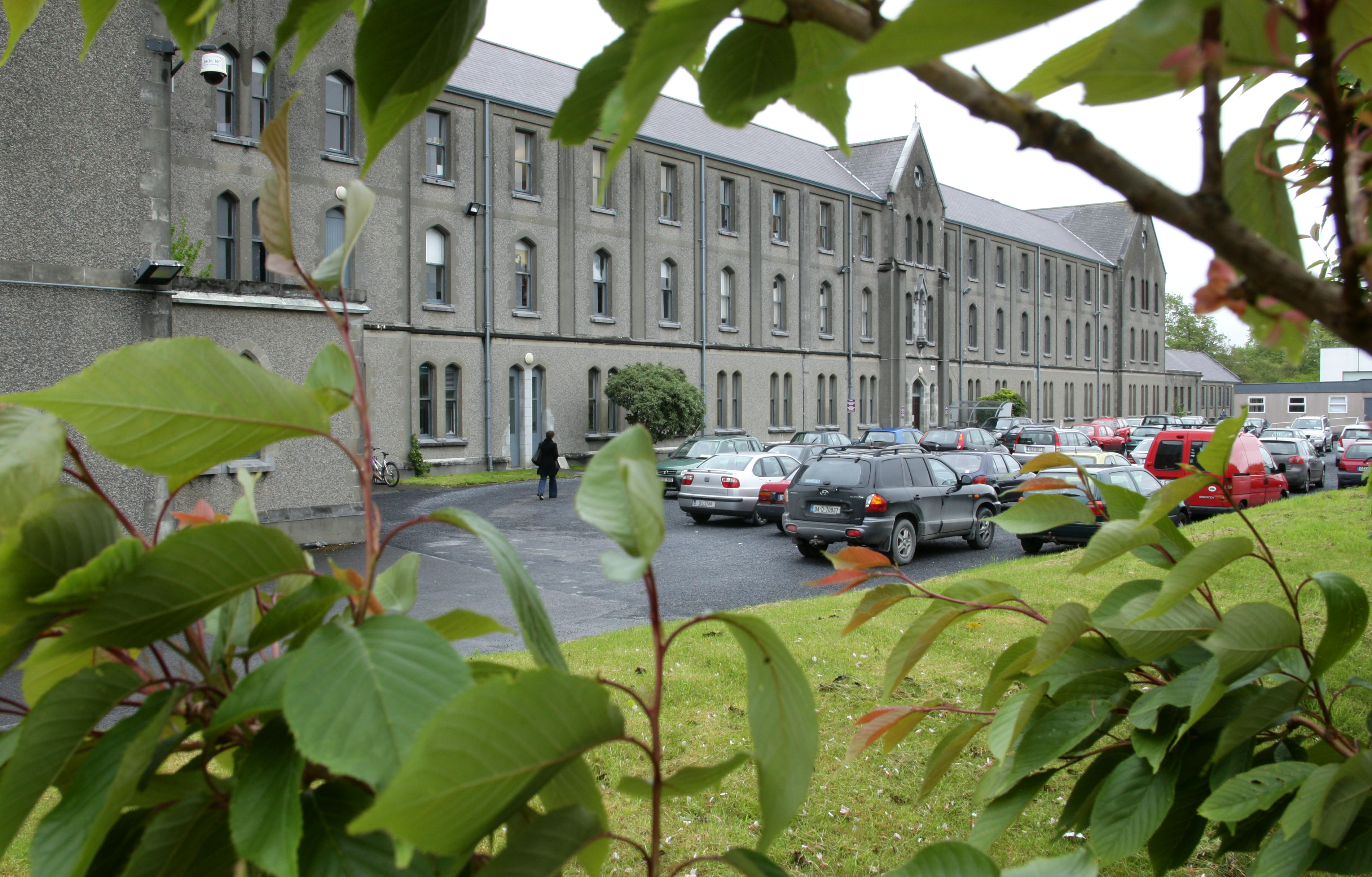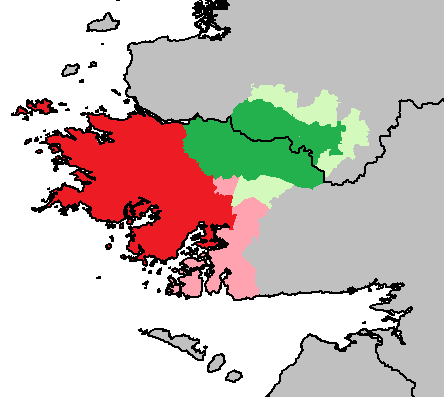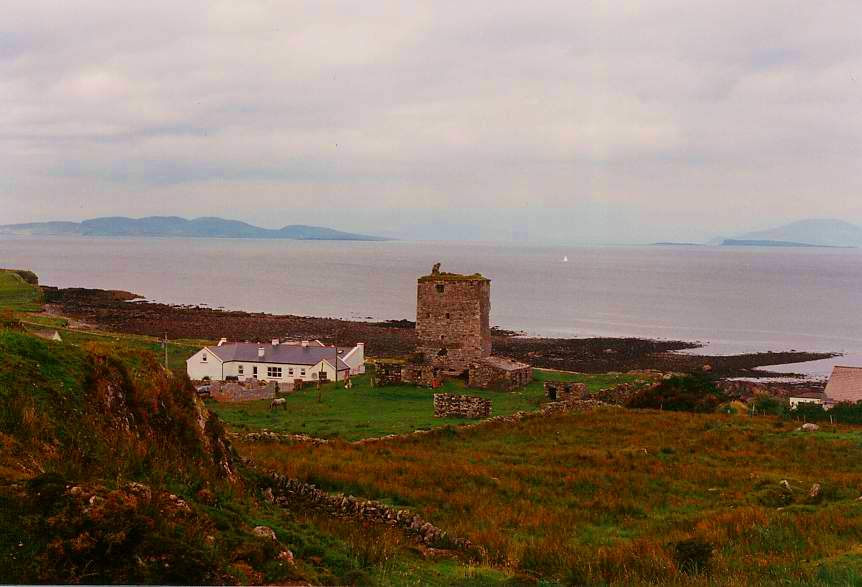|
Letterfrack
Letterfrack or Letterfrac () is a small village in the Connemara area of County Galway, Ireland. It was founded by Quakers in the mid-19th century. The village is south-east of Renvyle peninsula and north-east of Clifden on Barnaderg Bay and lies at the head of Ballinakill harbour. Letterfrack contains the visitors centre for Connemara National Park. History James and Mary Ellis, a Quaker couple from Bradford in England, moved to Letterfrack, during the Great Famine. Ellis became the resident landlord in Letterfrack in 1849. As Quakers, the Ellises wanted to help with the post-famine relief effort. They leased nearly of rough land and set about farming it and planting it with woodland. They built a schoolhouse, housing for tradesmen, a shop, a dispensary, and a temperance hotel. In 1857 the property was sold to John Hall, a staunch Protestant, and supporter of the Irish Church Mission to Roman Catholics. The ICM used the building with the aim of converting Catholics to Pro ... [...More Info...] [...Related Items...] OR: [Wikipedia] [Google] [Baidu] |
St Joseph's Industrial School, Letterfrack
St Joseph's Industrial School was an industrial school for young boys in Letterfrack, County Galway, Ireland. The school was built in 1886/7 after the designs of the architect William Hague, opened in 1887, and run by the Congregation of Christian Brothers. St Joseph's received a lasting notoriety through revelation of physical and sexual abuse of the boys by some of the Brothers there, with evidence of sexual abuse and extreme physical punishments going back to the 1930s. According to the Commission to Inquire into Child Abuse, between the years 1940 to 1970 15 children died there while in the care of the Christian Brothers, from causes including tuberculosis.Chapter 8, Letterfrack Industrial School ('Letterfrack'), 1885-1974 , Report of the |
Letterfrack Former Industrial School 2018 09 04
Letterfrack or Letterfrac () is a small village in the Connemara area of County Galway, Ireland. It was founded by Quakers in the mid-19th century. The village is south-east of Renvyle peninsula and north-east of Clifden on Barnaderg Bay and lies at the head of Ballinakill harbour. Letterfrack contains the visitors centre for Connemara National Park. History James and Mary Ellis, a Quaker couple from Bradford in England, moved to Letterfrack, during the Great Famine. Ellis became the resident landlord in Letterfrack in 1849. As Quakers, the Ellises wanted to help with the post-famine relief effort. They leased nearly of rough land and set about farming it and planting it with woodland. They built a schoolhouse, housing for tradesmen, a shop, a dispensary, and a temperance hotel. In 1857 the property was sold to John Hall, a staunch Protestant, and supporter of the Irish Church Mission to Roman Catholics. The ICM used the building with the aim of converting Catholics to Prot ... [...More Info...] [...Related Items...] OR: [Wikipedia] [Google] [Baidu] |
Atlantic Technological University
Atlantic Technological University (also known as Atlantic TU or ATU; ga, Ollscoil Teicneolaíochta an Atlantaigh; OTA) is a Technological Universities in Ireland, technological university in the west and north-west of Republic of Ireland, Ireland. It was formally established on 1 April 2022 as a merger of three existing Institutes of Technology in Ireland, institutes of technology (ITs) - Galway-Mayo IT, IT Sligo, and Letterkenny IT - into a single university, the fourth such TU in Ireland. History With alliances made in 2012, by 2015, Galway-Mayo IT (GMIT), along with IT Sligo and Letterkenny IT (LYIT), submitted a formal Expression of Interest to the Higher Education Authority (HEA) in the Republic of Ireland for re-designation as a Technological Universities in Ireland, Technological University. This partnership, known as the Connacht-Ulster Alliance (CUA), aimed to establish a 'Technological University' in the West of Ireland and County Donegal, a Counties of Ireland, cou ... [...More Info...] [...Related Items...] OR: [Wikipedia] [Google] [Baidu] |
Rudolf Maximilian Butler
Rudolf Maximilian Butler, RIAI, FRIBA, RSAI, RHA, RIA, (30 September 1872 – 3 February 1943) was a well-known Irish Roman Catholic ecclesiastical architectural historian, academic, journalist, and architect of Dublin active, throughout late-nineteenth-century to mid-twentieth-century Ireland. He resided and worked at 23 Kildare Street, Dublin until he designed a new residence for himself at 73, Ailesbury Road. He was brought up a Moravian and may have remained in that faith throughout his life, however, he designed all of his churches for the Roman Catholic Church, particularly for the Passionist Fathers. He was a founding member of the AAI in 1896, editor of the ''Irish Builder'' from 1899 to 1935, and professor of architecture at University College, Dublin. The RM Butler Architect Collection which covers both his work and his research into James Gandon is held by the library of University College Cork. Works * 1907: Sacred Heart Church in Castletownbere * 1910: St. C ... [...More Info...] [...Related Items...] OR: [Wikipedia] [Google] [Baidu] |
Diamond Hill (Ireland)
Diamond Hill or Bengooria () is an isolated peak overlooking the village of Letterfrack, in the northwest corner of the Twelve Bens in Connemara National Park in County Galway, Ireland. At only , it does not rank as an Arderin, or a Vandeleur-Lynam; however, it has the prominence to rank as a Marilyn.Mountainviews, (September 2013), "A Guide to Ireland's Mountain Summits: The Vandeleur-Lynams & the Arderins", Collins Books, Cork, Diamond Hill lies just west of Knockbrack and the small massif of Benbrack, and looks into the Polladirk valley, around which several major Bens are located. Despite its moderate size and isolation, compared to the nearby Twelve Bens, Diamond Hill is a popular peak due to its paths and boarded mountain trail, and relative ease of access, together with views of the core Twelve Bens range, and western Connemara. Naming According to Irish academic Paul Tempan, "Ghuaire" most likely refers to Guaire Aidne mac Colmáin (died 663), one of the Kings of Co ... [...More Info...] [...Related Items...] OR: [Wikipedia] [Google] [Baidu] |
Connemara National Park
Connemara National Park ( ga, Páirc Naisiúnta Chonamara) is one of six national parks in Ireland, managed by the National Parks and Wildlife Service. It is located in the northwest of Connemara in County Galway, on the west coast. History Connemara National Park was founded and opened to the public in 1980. It features 2,000 hectares of mountains, bogs, heaths, grasslands and forests. The entrance is situated on the Clifden side of Letterfrack. There are many remnants of human habitation within the park. There is a 19th-century graveyard as well as 4,000-year-old megalithic court tombs. Much of the land was once part of the Kylemore Abbey estate. Environment Flora Western blanket bog and heathland are the most common vegetation of Connemara National Park. The boglands are situated in the wet low lying environments whereas the blanket bog exists within the drier mountain atmosphere. Purple moorgrass is the most bountiful plant, creating colorful landscapes throughout the co ... [...More Info...] [...Related Items...] OR: [Wikipedia] [Google] [Baidu] |
Ballinakill Harbour
Ballinakill () is a natural harbour near the town of Letterfrack in County Galway in Ireland.{{Cite web, url=http://clonfertdiocese.ie/ballinakill-and-derrybrien, title=Ballinakill & Derrybrien, website=clonfertdiocese.ie, language=en-gb, access-date=2019-03-25 The harbour includes a number of islands such as Roeillaun (Red Island). Fish in this harbour include salmon, pollock and mackerel. A trip on a glass bottomed boat allows visitors to view the wildlife and scenery. A small museum (Oceans Alive) helps visitors to find out more about the area and its history. The harbour can be reached by turning towards Tully Cross at Letterfrack from the N59. Ballinakill is the final home and resting place of the Jacobite "Strong Ned" O'Flaherty. See also * Tully Mountain Tully Mountain, , is a prominent, steep-sided monadnock located in north central Massachusetts in the town of Orange. It is part of the Tully Mountain Wilderness Management Area. An exposed east facing ledge on t ... [...More Info...] [...Related Items...] OR: [Wikipedia] [Google] [Baidu] |
Irish Church Mission
The Irish Church Missions (ICM) is a conservative and semi-autonomous Anglican mission. It was founded in 1849 as The Irish Church Missions to the Roman Catholics chiefly by English Anglicans though with the backing and support of Church of Ireland clergy and bishops, with the aim of converting the Roman Catholics of Ireland to Protestantism. The reference to Roman Catholics in the title was removed in 2001. History The inspiration for the beginning of the organization came from the Revd. Alexander Dallas (1791–1869), Rector of Wonston, Hampshire, who since 1843 had been involved in actively evangelizing Roman Catholic people in Ireland. Dallas began his missionary work in Ireland by sending over 20,000 letters to householders throughout Ireland. He followed this up by sending eight missionaries to preach throughout the country and personally conducted a preaching tour in the West of Ireland in Galway and Connemara. The result of his missionary work by 1848 was the setting up o ... [...More Info...] [...Related Items...] OR: [Wikipedia] [Google] [Baidu] |
Connemara
Connemara (; )( ga, Conamara ) is a region on the Atlantic coast of western County Galway, in the west of Ireland. The area has a strong association with traditional Irish culture and contains much of the Connacht Irish-speaking Gaeltacht, which is a key part of the identity of the region and is the largest Gaeltacht in the country. Historically, Connemara was part of the territory of Iar Connacht (West Connacht). Geographically, it has many mountains (notably the Twelve Bens), peninsulas, coves, islands and small lakes. Connemara National Park is in the northwest. It is mostly rural and its largest settlement is Clifden. Etymology "Connemara" derives from the tribal name , which designated a branch of the , an early tribal grouping that had a number of branches located in different parts of . Since this particular branch of the lived by the sea, they became known as the (sea in Irish is , genitive , hence "of the sea"). Definition One common definition of the area is that ... [...More Info...] [...Related Items...] OR: [Wikipedia] [Google] [Baidu] |
John McEvilly
John McEvilly (1818–1902) was an Irish Roman Catholic Church clergyman who served as the Archbishop of Tuam from 1881 to 1902. He was born on 15 April 1818 in Louisburgh, a small town near Westport, County Mayo, Ireland., ''The Episcopal Succession in England, Scotland and Ireland, volume 2'', p. 233. He entered the Seminary of Tuam in January 1833, then sent to Maynooth College in September 1833, where among his contemporaries was the future Archbishop of Armagh Joseph Dixon. In 1842, McEvilly was ordained a priest of the Archdiocese of Tuam. On 9 January 1857, he was appointed the Bishop of Galway by the Holy See and was consecrated on 22 March 1857 by the Most Reverend John MacHale, Archbishop of Tuam., ''Handbook of British Chronology'', p. 430. While as Bishop of Galway, McEvilly was appointed the Apostolic Administrator of Kilmacduagh and Kilfenora in September 1866 and appointed Coadjutor Archbishop of Tuam on 11 January 1878. On the death of Archbishop MacHale, he ... [...More Info...] [...Related Items...] OR: [Wikipedia] [Google] [Baidu] |
Renvyle
Renvyle or Rinvyle () is a peninsula and electoral division in North-West Connemara in County Galway, close to the border with County Mayo in Ireland. History The ruins of the castle of Grace O'Malley (''Gráinne Mhaol'') can be found on the peninsula's western fringe. Close by, in Cashleen, is the ruined medieval Church of the Seven Daughters which was named after the Seven Sisters of Renvyle who preached in the area. Geography Renvyle is surrounded on three sides by the Atlantic Ocean and by the Dawros river on the other side. It contains the villages of Tully and Tully Cross. Renvyle is situated in the parish of Ballinakill and historically was part of the barony of Ballynahinch. The villages of Leenane and Letterfrack are close by and Clifden is the nearest town, lying 12 miles (9 km) to the south. The peninsula is dominated by Letter Hill (also known as Tully Mountain) which is 356m high. The Twelve Bens Mountains are also visible, as is Mweelrea, the largest moun ... [...More Info...] [...Related Items...] OR: [Wikipedia] [Google] [Baidu] |




